Question of the Week | Strategies to get glucose “under control”

JR is 13 years old and has type 1 diabetes and their time in range is usually less than 50%. JR’s mom finds empty soda bottles hidden in the back of JR’s drawer along with some candy bars.
JR’s mom is very upset about this discovery and asks you how to get this “situation under control”. What is the most appropriate response?
- Empathize with her and acknowledge that non-adherence is very common in this age group.
- Gently ask her if she has noticed any other signs of disordered eating.
- Explore if they have established clear guidelines for daily carb counting.
- Recognize her feelings and explore problem solving strategies.
Click Here to Test your Knowledge
Want to learn more about this practice question?
Join us LIVE in San Diego for our DiabetesEd Training Conference
October 11-13th, 2023

Two Registration Options
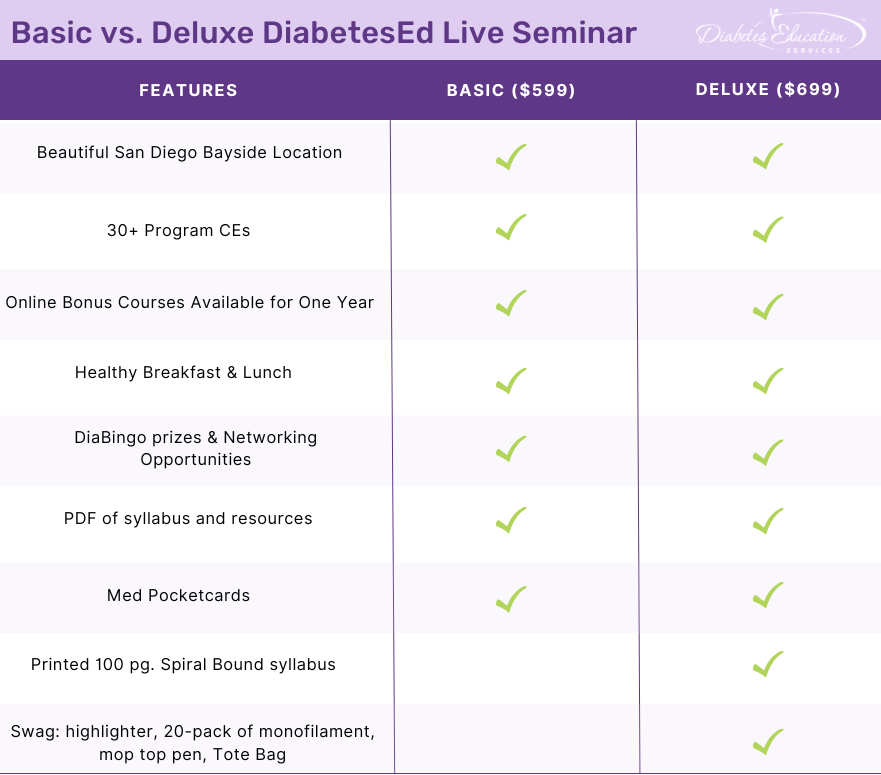
Join Coach Beverly and Team for two and a half days of knowledge-sharing, fun, networking, games with prizes, and “aha” moments in beautiful San Diego.
You don’t want to miss this one-of-a-kind learning opportunity. Get away from all those daily responsibilities and immerse yourself in a fun and intensive conference with plenty of networking opportunities.
Attendees will leave this conference with new tools and a more complete understanding of the latest advances in diabetes care, from medications to technology to Medical Nutrition Therapy!
Bring your colleagues and enjoy our friend discount.
Our team expertly translates the complex science of diabetes into understandable terms while keeping it real, practical, and fun.
Team of expert faculty includes:
- Diana Isaacs, PharmD, BCPS, BC-ADM, BCACP, CDCES – Educator of the Year, 2020
- Coach Beverly Thomassian, RN, MPH, CDCES, BC-ADM
- Ashley LaBrier, MS, RD, CDCES, Diabetes Program Coordinator
All hours earned count toward your CDCES Accreditation Information
Sign up for Diabetes Blog Bytes – we post one daily Blog Byte from Monday to Friday. And of course, Tuesday is our Question of the Week. It’s Informative and FREE! Sign up below!
The use of DES products does not guarantee the successful passage of the CDCES exam. CBDCE does not endorse any preparatory or review materials for the CDCES exam, except for those published by CBDCE.
Upcoming Webinars & Flash Sale | Behavior Change Theories, Tech Data Toolkit & Insulin Workshop
Upcoming Webinars
Insulin Calculation Workshop | Level 4 | 1.5 CEs
Airs live on August 22, 2023, at 11:30 am PT

Determining basal & bolus rates for multiple daily injections or insulin pumps can seem overwhelming. This course provides participants with a step-by-step approach to determining basal rates, bolus ratios & how to problem-solve when blood glucose levels aren’t on target. During this course, Coach Beverly provides abundant case studies to give participants hands-on practice & build confidence when calculating insulin doses for a variety of situations.
All hours earned count toward your CDCES Accreditation Information
Instructor: Beverly Thomassian RN, MPH, CDCES, has been Board Certified in Advanced Diabetes Management for over 20 years. She is an Associate Clinical Professor at UCSF, a working educator, and a nationally recognized diabetes expert. She has a Master’s Degree in Public Health from UCLA, with a focus on behavioral health and education.
FREE Behavior Change Theories Made Easy
Airs live on August 23, 2023, at 11:30 am PT
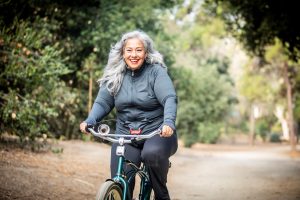
Join us live on August 23rd from 11:30 am to 12:30 pm for our Free Webinar: Behavior Change Theories Made Easy
Keeping all the behavior change and learning theories straight can be daunting, especially if you are trying to get to the “best” answer for certification exams. Coach Beverly feels your pain and wants to help out. To say thanks for 25 years, she’s hosting a FREE Behavior Change Webinar to sort out and dissect the theories most relevant in clinical practice and for exam preparation.
Objectives:
- Describe 4 of the most common behavior change theories.
- Discuss how to apply these theories in clinical practice.
- List the steps in the transtheoretical model
- Have fun testing these theories out in real life.
Can’t make it live? No worries. We will send post the recorded version to the Online University within 24 hours of the broadcast
Two Ways to Register
Intended Audience: All health care professionals who are coaching individuals to support healthier self-management or who are taking the CDCES or BC-ADM exam.
All hours earned count toward your CDCES Accreditation Information
Instructor: Beverly Thomassian RN, MPH, CDCES, has been Board Certified in Advanced Diabetes Management for over 20 years. She is an Associate Clinical Professor at UCSF, a working educator, and a nationally recognized diabetes expert. She has a Master’s Degree in Public Health from UCLA, with a focus on behavioral health and education.
NEW: Diabetes Technology Data Toolkit: Hands-on Data Interpretation Workshop with Dr. Diana Isaacs
Flash Sale – Only $59 | Sale ends Sunday, Aug 20th
Join Diana Isaacs live on August 30th, 2023, at 11:30 am PST
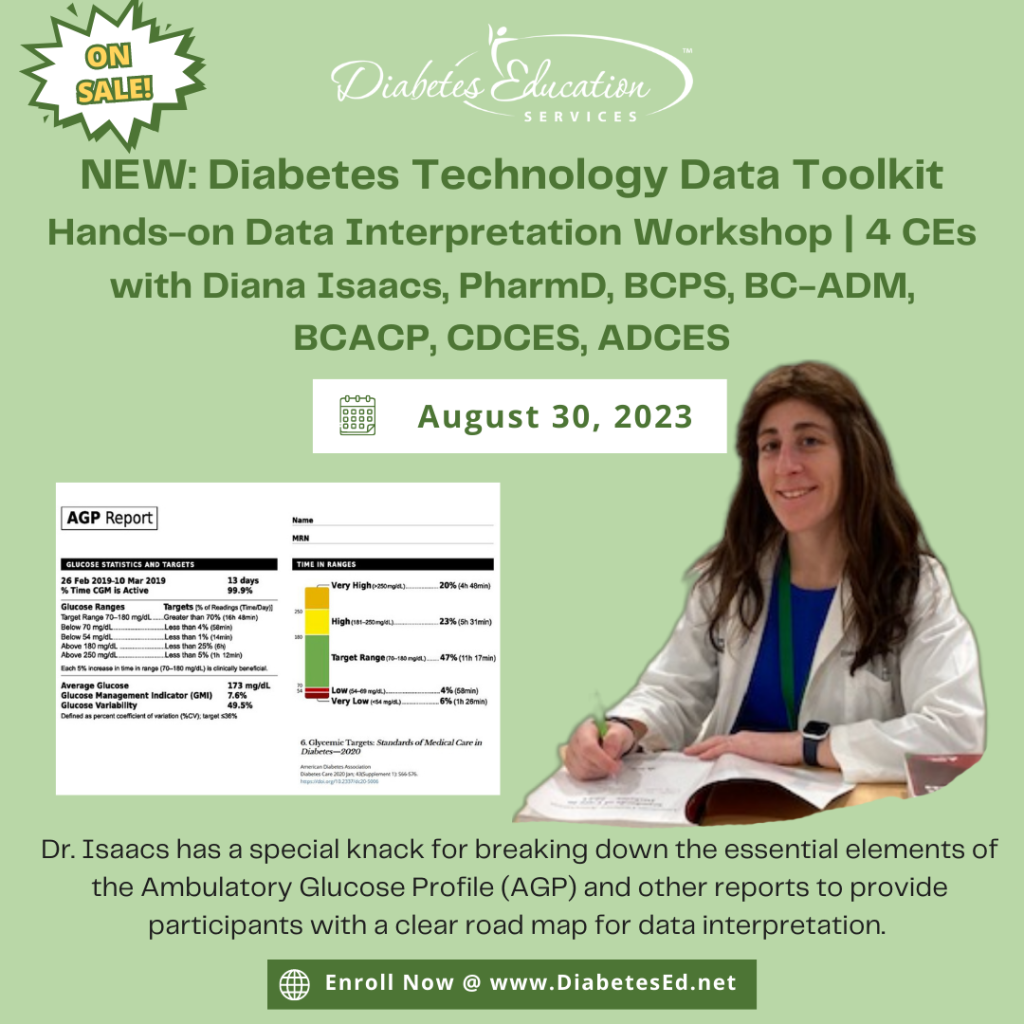
As diabetes technology is becoming commonplace in our practice, figuring out how to make sense of all the data can seem overwhelming. Dr. Isaacs has a special knack for breaking down the essential elements of the Ambulatory Glucose Profile (AGP) and other reports to provide participants with a clear road map for data interpretation. She includes many sample practice cases utilizing CGM, connected pens, and insulin pumps.
By attending this interactive workshop, participants will become more confident in interpreting the AGP and continuous glucose monitor (CGM) data and determining needed medication and lifestyle adjustments.
Coach Beverly is so excited about celebrating 25 years in business, that due to popular demand, she created a FREE course to de-mystify those complicated and confusing behavior change theories. Our community kept asking for this class and we are ready to deliver! In addition, we are thrilled to offer a FREE webinar on what you need to know when Preparing for the CDCES Exam and our course on Cancer & Diabetes.
Instructor: Diana Isaacs, PharmD, BCPS, BCACP, CDCES, BC-ADM, FADCES, FCCPCES, was awarded ADCES Diabetes Care and Educational Specialist of the Year for her educational platform promoting the use of CGM for people with diabetes and other innovations. She is the Director of Education & Training in Diabetes Technology at the Cleveland Clinic. She has numerous diabetes publications and research projects focusing on medications, CGM, and diabetes technology. You won’t want to miss this hands-on workshop with an international expert in the field.
All hours earned count toward your CDCES Accreditation Information
Sign up for Diabetes Blog Bytes – we post one daily Blog Byte from Monday to Friday. And of course, Tuesday is our Question of the Week. It’s Informative and FREE! Sign up below!
The use of DES products does not guarantee the successful passage of the CDCES exam. CBDCE does not endorse any preparatory or review materials for the CDCES exam, except for those published by CBDCE.
Rationale of the Week | Hypoglycemia Before Meal; Best Approach?

For last week’s practice question, we quizzed participants on Hypoglycemia before meals. 37% of respondents chose the best answer. We want to clarify and share this important information, so you can pass it on to people living with diabetes and your colleagues, plus prepare for exam success!
Before we start though, if you don’t want any spoilers and haven’t tried the question yet, you can answer it below: Answer Question
Question: JR has type 1 diabetes and is worried how to best adjust insulin to address hypoglycemia and prevent future episodes. They tell you that their blood sugar yesterday before lunch was 67 mg/dL and they were getting ready to eat 45 gms of carb and cover with 3 units of insulin.
JR asks, what is the best strategy in this situation? What action do you advise JR to take?
Answer Choices:
- Eat 15 gms of carbohydrates first to get blood sugar above 70, then cover with three units of bolus insulin and eat meal.
- Decrease bolus insulin by about one unit, inject insulin then immediately eat meal.
- Eat intended meal starting with carbs first, then take three units of insulin after completing meal.
- All of the above could be options.
- Only A or B are correct.

Getting to the Best Answer
If you are thinking about taking the certification exam, this practice test question will set you up for success. Test writers anticipate possible answers based on the details in the question. They will wave those “juicy answers” right under your nose. Your job is to weed through the particulars, pluck out the most important elements and choose the BEST answer.
Answer 1 is incorrect. 20.43% chose this answer. “Eat 15 gms of carbohydrates first to get blood sugar above 70, then cover with three units of bolus insulin and eat meal.” This standard intervention, often referred to as the “rule of 15”, is a safe approach that is certainly a correct option.
Answer 2 is incorrect. 12.07% of you chose this answer. “Decrease bolus insulin by about one unit, inject insulin then immediately eat meal.” This standard intervention is also a safe approach that is certainly a correct option.
Answer 3 is incorrect. About 10.22% of respondents chose this. “Eat intended meal starting with carbs first, then take three units of insulin after completing meal.” This creative intervention is certainly a viable option that JR could choose.
Answer 4 is correct. 36.74% chose this answer. “All of the above could be options.” YES, this is the BEST answer. People with type 1 diabetes can use a variety of approaches to address and treat hypoglycemia. As diabetes care and education coaches, we take a person-centered approach, leaning into the individual’s expertise. If an approach is safe and fits into JR’s lifestyle and comfort zone, we are going to support their decision. We also keep the door open to reviewing the impact of the approach and engaging in collaborative problem solving as needed.
Finally, Answer 5 is incorrect 20.54% of you chose this answer. “Only A or B are correct.” Not quite the best answer since people with type 1 diabetes can use a variety of approaches to address and treat hypoglycemia. As diabetes care and education coaches, we take a person-centered approach, leaning into the individual’s expertise. If an approach is safe and fits into JR’s lifestyle and comfort zone, we are going to support their decision. We also keep the door open to reviewing the impact of the approach and engaging in collaborative problem solving as needed. That is why the answer choice “C” could also be correct. JR might be most comfortable with taking the insulin after the meal to avoid another hypoglycemic event.
We hope you appreciate this week’s rationale! Thank you so much for taking the time to answer our Question of the Week and participate in this fun learning activity!
Want to learn more about this practice question?
Join us LIVE in San Diego for our DiabetesEd Training Conference
October 11-13th, 2023

Two Registration Options

Join Coach Beverly and Team for two and a half days of knowledge-sharing, fun, networking, games with prizes, and “aha” moments in beautiful San Diego.
You don’t want to miss this one-of-a-kind learning opportunity. Get away from all those daily responsibilities and immerse yourself in a fun and intensive conference with plenty of networking opportunities.
Attendees will leave this conference with new tools and a more complete understanding of the latest advances in diabetes care, from medications to technology to Medical Nutrition Therapy!
Bring your colleagues and enjoy our friend discount.
Our team expertly translates the complex science of diabetes into understandable terms while keeping it real, practical, and fun.
Team of expert faculty includes:
- Diana Isaacs, PharmD, BCPS, BC-ADM, BCACP, CDCES – Educator of the Year, 2020
- Coach Beverly Thomassian, RN, MPH, CDCES, BC-ADM
- Ashley LaBrier, MS, RD, CDCES, Diabetes Program Coordinator
All hours earned count toward your CDCES Accreditation Information
Sign up for Diabetes Blog Bytes – we post one daily Blog Byte from Monday to Friday. And of course, Tuesday is our Question of the Week. It’s Informative and FREE! Sign up below!
The use of DES products does not guarantee the successful passage of the CDCES exam. CBDCE does not endorse any preparatory or review materials for the CDCES exam, except for those published by CBDCE.
What Do I Do with These Needles? Sharps Disposal Resources

MR arrived at the clinic last week with a bag full of stuff. To be honest, my imagination conjured that they had a bag of fresh peaches or other fruits from their local farm to share with the staff. I laughed when they pulled out bleach and coffee containers filled with lancets and needles. When we first met they had been tossing their used sharps in the trash. After I explained that those sharps can harm the sanitation workers plus they can mess up recycling equipment, they were more than happy to start tossing used needles and syringes in used bleach bottles and coffee cans. MR is not alone, many people living with diabetes use sharps such as lancets or needles to manage their diabetes and disposing of used sharps safely is important for all of us.
We want to share this helpful website, SafetyIsThePoint.org that gives instructions for how to safely dispose of household-used sharps. This website has videos, cheatsheets, and a search function for drop-off locations available by zip code.
Household Sharps Management
On their Household Sharps Management page, they outlined the steps for how to safely dispose of sharps in their household trash, along with an instructional video.
Finding Local Disposal Locations
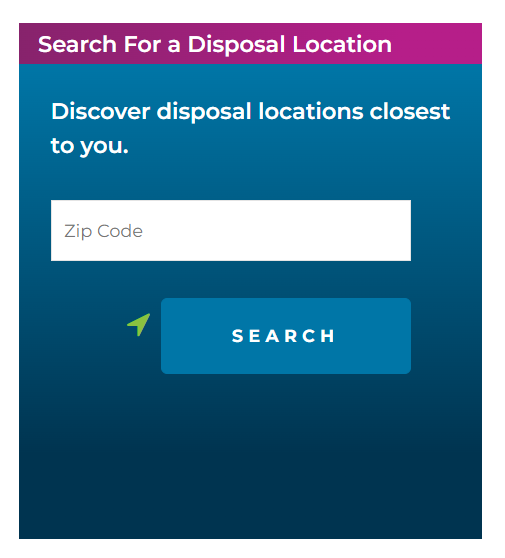
Across the U.S. people living with Diabetes can enter their zip code and find disposal centers in their regions.
Cheatsheets
They also provide handy posters and cheatsheets on best practices for household sharps disposal.
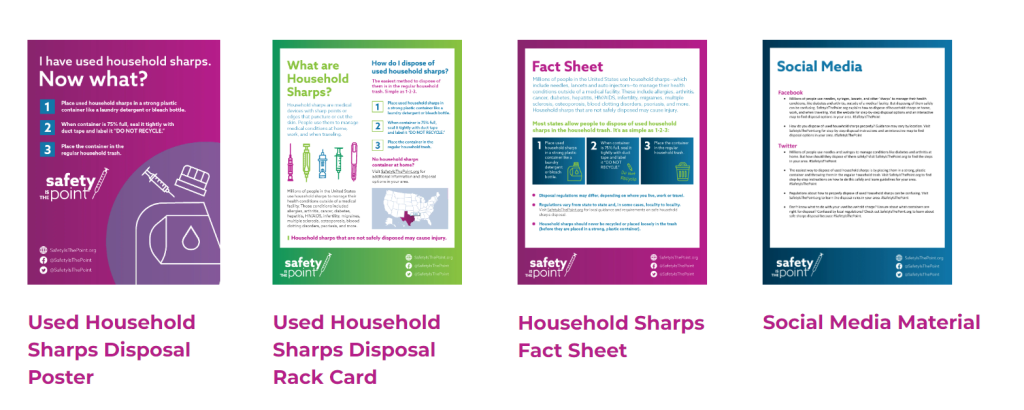
- Used Household Sharps Disposal Poster
- Used Household Sharps Disposal Rack Card
- Household Sharps Fact Sheet
- Social Media Material
Check out their website, SafetyIsThePoint.org to read more.
Join us for our upcoming FREE webinar
3 Steps to Save Feet; Assess, Screen, and Report
Airs live on August 10, 2023, at 11:30 am PST

Coach Beverly walks participants through the 3 Step Process to Save Feet; Assess, Screen and Report. She will provide simple and clear instructions on how to assess and inspect feet, along with risk assessment and action steps. We will share free teaching tools, strategies, and documentation forms adapted from the Lower Extremity Prevention Program (LEAP) that you can immediately implement in your practice setting.
Objectives:
- Describe steps involved in effective foot assessment made easy.
- Demonstrate how to use a monofilament to assess sensation.
- Discuss the use of screening forms to report findings
Two Ways to Register
Intended Audience: This course is designed for all health care providers and educators, who are interested in learning more about assessing and saving feet in people living with diabetes.
All hours earned count toward your CDCES Accreditation Information
Instructor: Beverly Thomassian RN, MPH, CDCES, has been Board Certified in Advanced Diabetes Management for over 20 years. She is an Associate Clinical Professor at UCSF, a working educator, and a nationally recognized diabetes expert. She has a Master’s Degree in Public Health from UCLA, with a focus on behavioral health and education.
All hours earned count toward your CDCES Accreditation Information
Sign up for Diabetes Blog Bytes – we post one daily Blog Byte from Monday to Friday. And of course, Tuesday is our Question of the Week. It’s Informative and FREE! Sign up below!
The use of DES products does not guarantee the successful passage of the CDCES exam. CBDCE does not endorse any preparatory or review materials for the CDCES exam, except for those published by CBDCE.
Question of the Week | How Can TR Improve Time in Range?

TR is 25 and has new type 1 diabetes and is hoping to get on an insulin pump soon. TR weighs 70 kgs and takes 8 units basal insulin at bedtime, plus takes 1 unit bolus insulin for every 15 gms of carbohydrate and their correction for hyperglycemia is 1 unit for every 50 points above 120. When looking at TR’s ambulatory glucose profile, their time in range is 32% with 67% above range and about ~1% below range. Glucose levels tend to increase starting with dinner at 5pm and stay elevated throughout the night.
Based on this information, what change(s) could help improve time in range?
- Avoid Somogyi effect from stacking bolus insulin.
- Change insulin to carb ratio to 1:17.
- Increase basal insulin by 2-3 units.
- Adjust correction ratio to 1 unit for every 60 points above 120.
Click Here to Test your Knowledge
Flash Sale – Tech Data Toolkit | Only $59 | Sale ends Sunday, Aug 20th
NEW: Diabetes Technology Data Toolkit: Hands-on Data Interpretation Workshop with Dr. Diana Isaacs
Flash Sale – Only $59 | Sale ends Sunday, Aug 20th
Join Diana Isaacs live on August 30th, 2023, at 11:30 am PST

As diabetes technology is becoming commonplace in our practice, figuring out how to make sense of all the data can seem overwhelming. Dr. Isaacs has a special knack for breaking down the essential elements of the Ambulatory Glucose Profile (AGP) and other reports to provide participants with a clear road map for data interpretation. She includes many sample practice cases utilizing CGM, connected pens, and insulin pumps.
By attending this interactive workshop, participants will become more confident in interpreting the AGP and continuous glucose monitor (CGM) data and determining needed medication and lifestyle adjustments.
Coach Beverly is so excited about celebrating 25 years in business, that due to popular demand, she created a FREE course to de-mystify those complicated and confusing behavior change theories. Our community kept asking for this class and we are ready to deliver! In addition, we are thrilled to offer a FREE webinar on what you need to know when Preparing for the CDCES Exam and our course on Cancer & Diabetes.
Instructor: Diana Isaacs, PharmD, BCPS, BCACP, CDCES, BC-ADM, FADCES, FCCPCES, was awarded ADCES Diabetes Care and Educational Specialist of the Year for her educational platform promoting the use of CGM for people with diabetes and other innovations. She is the Director of Education & Training in Diabetes Technology at the Cleveland Clinic. She has numerous diabetes publications and research projects focusing on medications, CGM, and diabetes technology. You won’t want to miss this hands-on workshop with an international expert in the field.
Upcoming Webinars
FREE Behavior Change Theories Made Easy
Airs live on August 23, 2023, at 11:30 am PT

Join us live on August 23rd from 11:30 am to 12:30 pm for our Free Webinar: Behavior Change Theories Made Easy
Keeping all the behavior change and learning theories straight can be daunting, especially if you are trying to get to the “best” answer for certification exams. Coach Beverly feels your pain and wants to help out. To say thanks for 25 years, she’s hosting a FREE Behavior Change Webinar to sort out and dissect the theories most relevant in clinical practice and for exam preparation.
Objectives:
- Describe 4 of the most common behavior change theories.
- Discuss how to apply these theories in clinical practice.
- List the steps in the transtheoretical model
- Have fun testing these theories out in real life.
Can’t make it live? No worries. We will send post the recorded version to the Online University within 24 hours of the broadcast
Two Ways to Register
Intended Audience: All health care professionals who are coaching individuals to support healthier self-management or who are taking the CDCES or BC-ADM exam.
All hours earned count toward your CDCES Accreditation Information
Instructor: Beverly Thomassian RN, MPH, CDCES, has been Board Certified in Advanced Diabetes Management for over 20 years. She is an Associate Clinical Professor at UCSF, a working educator, and a nationally recognized diabetes expert. She has a Master’s Degree in Public Health from UCLA, with a focus on behavioral health and education.
Cancer & Diabetes | Level 4 | 1.25 CEs
Airs live on August 14, 2023, at 11:30 am PT
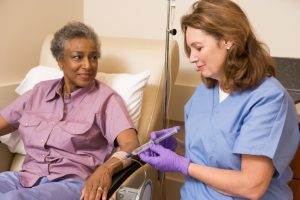
Patients with cancer often experience hyperglycemia secondary to treatment, which can increase the risk of infection & compromise their nutritional status. In addition, recent research has identified the link between diabetes & cancer. Join us to learn more about this unexpected link & treatment strategies for steroid-induced hyperglycemia using a case study approach.
Intended Audience: These courses are knowledge-based activities designed for individuals or groups of diabetes educators, including RNs, RDs, Pharmacists, Nurse Practitioners, Clinical Nurse Specialists, Physician Assistants and other health care providers interested in enhancing their knowledge of diabetes management for people with cancer.
All hours earned count toward your CDCES Accreditation Information
Instructor: Beverly Thomassian RN, MPH, CDCES, BC-ADM is a working educator and a nationally recognized diabetes expert.
FREE Preparing for the CDCES Exam Webinar
Airs live on August 17, 2023, at 11:30 am PT

This course will transform your test anxiety into calm self-confidence and test-taking readiness.
Preparing for the CDCES Exam Webinar Topics
- Exam requirement updates for 2023.
- Exam eligibility and test format
- Strategies to succeed along with a review of study tips and test-taking tactics.
- We will review sample test questions and the reasoning behind choosing the right answers.
- Learn how to focus your time and prepare to take the CDCES Exam. We provide plenty of sample test questions
Instructor: Beverly Thomassian RN, MPH, CDCES, has been Board Certified in Advanced Diabetes Management for over 20 years. She is an Associate Clinical Professor at UCSF, a working educator, and a nationally recognized diabetes expert. She has a Master’s Degree in Public Health from UCLA, with a focus on behavioral health and education.
All hours earned count toward your CDCES Accreditation Information
Sign up for Diabetes Blog Bytes – we post one daily Blog Byte from Monday to Friday. And of course, Tuesday is our Question of the Week. It’s Informative and FREE! Sign up below!
The use of DES products does not guarantee the successful passage of the CDCES exam. CBDCE does not endorse any preparatory or review materials for the CDCES exam, except for those published by CBDCE.
Upcoming Webinars | Behavior Change Theories, Cancer & Diabetes and CDCES Exam Prep
Coach Beverly is so excited about celebrating 25 years in business, that due to popular demand, she created a FREE course to de-mystify those complicated and confusing behavior change theories. Our community kept asking for this class and we are ready to deliver! In addition, we are thrilled to offer a FREE webinar on what you need to know when Preparing for the CDCES Exam and our course on Cancer & Diabetes.
FREE Behavior Change Theories Made Easy
Airs live on August 23, 2023, at 11:30 am PT

Join us live on August 23rd from 11:30 am to 12:30 pm for our Free Webinar: Behavior Change Theories Made Easy
Keeping all the behavior change and learning theories straight can be daunting, especially if you are trying to get to the “best” answer for certification exams. Coach Beverly feels your pain and wants to help out. To say thanks for 25 years, she’s hosting a FREE Behavior Change Webinar to sort out and dissect the theories most relevant in clinical practice and for exam preparation.
Objectives:
- Describe 4 of the most common behavior change theories.
- Discuss how to apply these theories in clinical practice.
- List the steps in the transtheoretical model
- Have fun testing these theories out in real life.
Can’t make it live? No worries. We will send post the recorded version to the Online University within 24 hours of the broadcast
Two Ways to Register
Intended Audience: All health care professionals who are coaching individuals to support healthier self-management or who are taking the CDCES or BC-ADM exam.
All hours earned count toward your CDCES Accreditation Information
Instructor: Beverly Thomassian RN, MPH, CDCES, has been Board Certified in Advanced Diabetes Management for over 20 years. She is an Associate Clinical Professor at UCSF, a working educator, and a nationally recognized diabetes expert. She has a Master’s Degree in Public Health from UCLA, with a focus on behavioral health and education.
Cancer & Diabetes | Level 4 | 1.25 CEs
Airs live on August 14, 2023, at 11:30 am PT

Patients with cancer often experience hyperglycemia secondary to treatment, which can increase the risk of infection & compromise their nutritional status. In addition, recent research has identified the link between diabetes & cancer. Join us to learn more about this unexpected link & treatment strategies for steroid-induced hyperglycemia using a case study approach.
Intended Audience: These courses are knowledge-based activities designed for individuals or groups of diabetes educators, including RNs, RDs, Pharmacists, Nurse Practitioners, Clinical Nurse Specialists, Physician Assistants and other health care providers interested in enhancing their knowledge of diabetes management for people with cancer.
All hours earned count toward your CDCES Accreditation Information
Instructor: Beverly Thomassian RN, MPH, CDCES, BC-ADM is a working educator and a nationally recognized diabetes expert.
FREE Preparing for the CDCES Exam Webinar
Airs live on August 17, 2023, at 11:30 am PT

This course will transform your test anxiety into calm self-confidence and test-taking readiness.
Preparing for the CDCES Exam Webinar Topics
- Exam requirement updates for 2023.
- Exam eligibility and test format
- Strategies to succeed along with a review of study tips and test-taking tactics.
- We will review sample test questions and the reasoning behind choosing the right answers.
- Learn how to focus your time and prepare to take the CDCES Exam. We provide plenty of sample test questions
Instructor: Beverly Thomassian RN, MPH, CDCES, has been Board Certified in Advanced Diabetes Management for over 20 years. She is an Associate Clinical Professor at UCSF, a working educator, and a nationally recognized diabetes expert. She has a Master’s Degree in Public Health from UCLA, with a focus on behavioral health and education.
All hours earned count toward your CDCES Accreditation Information
Sign up for Diabetes Blog Bytes – we post one daily Blog Byte from Monday to Friday. And of course, Tuesday is our Question of the Week. It’s Informative and FREE! Sign up below!
The use of DES products does not guarantee the successful passage of the CDCES exam. CBDCE does not endorse any preparatory or review materials for the CDCES exam, except for those published by CBDCE.
Rationale of the Week | Preventing Hypo During Exercise

For last week’s practice question, we quizzed participants on Hypoglycemia during exercise. 79% of respondents chose the best answer. We want to clarify and share this important information, so you can pass it on to people living with diabetes and your colleagues, plus prepare for exam success!
Before we start though, if you don’t want any spoilers and haven’t tried the question yet, you can answer it below: Answer Question
Question: JR has type 1 and tells you they limit their carbohydrate intake to 30 gms a day to prevent hyperglycemia. Their A1C is 6.7% and time in range is over 70%. They tell you their main goal is to figure out how to prevent hypoglycemia during exercise.
What would be the best response using a person-centered approach?
Answer Choices:
- Explore how they are currently managing blood sugars around exercise.
- Reinforce that glucose needs to be above 100 mg/dL according to ADA Standards to prevent exercise induced hypoglycemia.
- Gently suggest referral to a RD to evaluate actual daily carbohydrate needs.
- Redirect the conversation to evaluate if JR might be experiencing disordered eating.

Getting to the Best Answer
If you are thinking about taking the certification exam, this practice test question will set you up for success. Test writers anticipate possible answers based on the details in the question. They will wave those “juicy answers” right under your nose. Your job is to weed through the particulars, pluck out the most important elements and choose the BEST answer.
Answer 1 is correct]. 79.44% chose this answer. “Explore how they are currently managing blood sugars around exercise.” YES, GREAT JOB! Since this response is person centered and respectful of JR’s desire to learn how to prevent hypoglycemia, it is the best answer. Sometimes, we might be tempted to focus on a different goal than what the individual is requesting. However, by addressing their priorities FIRST, we build trust and create meaningful connections.
Answer 2 is incorrect. 7.73% of you chose this answer. “Reinforce that glucose needs to be above 100 mg/dL according to ADA Standards to prevent exercise induced hypoglycemia.” This answer doesn’t allow for exploration, personalization and customization. A glucose goal of “above 100” pre-exercise does not fit for everyone. People with type 1 diabetes often feel more comfortable with a blood sugar 180 mg/dL or greater before engaging in activity to prevent hypoglycemia from glucose expenditure during exercise.
Answer 3 is incorrect. About 8.06% of respondents chose this. “Gently suggest referral to a RD to evaluate actual daily carbohydrate needs.” Although, JR is limiting his intake to 30gms carb a day, they have stated that they want to work on preventing exercise related hypoglycemia. Sometimes, we might be tempted to focus on a different goal than what the individual is requesting. However, by addressing their priorities FIRST, we build trust and create meaningful connections.
Finally, Answer 4 is incorrect. 4.77% chose this answer. “Redirect the conversation to evaluate if JR might be experiencing disordered eating.” Although, JR is limiting his intake to 30gms carb a day, they have stated that they want to work on preventing exercise related hypoglycemia. Sometimes, we might be tempted to focus on a different goal than what the individual is requesting. However, by addressing their priorities FIRST, we build trust and create opportunities to explore other topics in the future.
We hope you appreciate this week’s rationale! Thank you so much for taking the time to answer our Question of the Week and participate in this fun learning activity!
Want to learn more about this question?
ReVive 5 Diabetes Training Program
“ReVive 5 Program is the best program I have ever attended – should be required for all diabetes educators! Thank you so much for translating this research into practical approaches!!” – Sarah F.
Save $100! Enroll now to watch the webinar on-demand

ReViVE 5 Diabetes Training Program:
Unlocking Hidden Barriers to Diabetes Management
Enroll Now and Save $100!
Recorded & Ready to Watch
Addressing diabetes distress can be tricky, even for seasoned healthcare professionals.
We invite you to attend this hands-on training program that provides the essential steps to address diabetes distress combined with an innovative approach to glucose management. Our experts offer realistic strategies to address diabetes distress that you can immediately apply to your practice setting. Plus, the ReVive 5 Program provides a breadth of tools and resources to create more meaningful connections with people with diabetes.
Team of Experts: ReVive 5 is taught by a team of 3 Interdisciplinary Experts:
- Lawrence Fisher, Ph.D., ABPP, Professor Emeritus, UCSF
- Susan Guzman, PhD
- Beverly Thomassian, RN, MPH, CDCES, BC-ADM
Accredited Training Program:
- 15.0 CEs – Includes the 7-hour ReVive 5 Training Program, Certificate, and 5 FREE bonus courses to supplement content.
- A comprehensive set of assessment tools, educational materials, log sheets, and resources.
“ReVive 5” breathes new life into our relationship with diabetes, bringing a fresh perspective to both the person with diabetes and the provider.
All hours earned count toward your CDCES Accreditation Information
Sign up for Diabetes Blog Bytes – we post one daily Blog Byte from Monday to Friday. And of course, Tuesday is our Question of the Week. It’s Informative and FREE! Sign up below!
The use of DES products does not guarantee the successful passage of the CDCES exam. CBDCE does not endorse any preparatory or review materials for the CDCES exam, except for those published by CBDCE.








